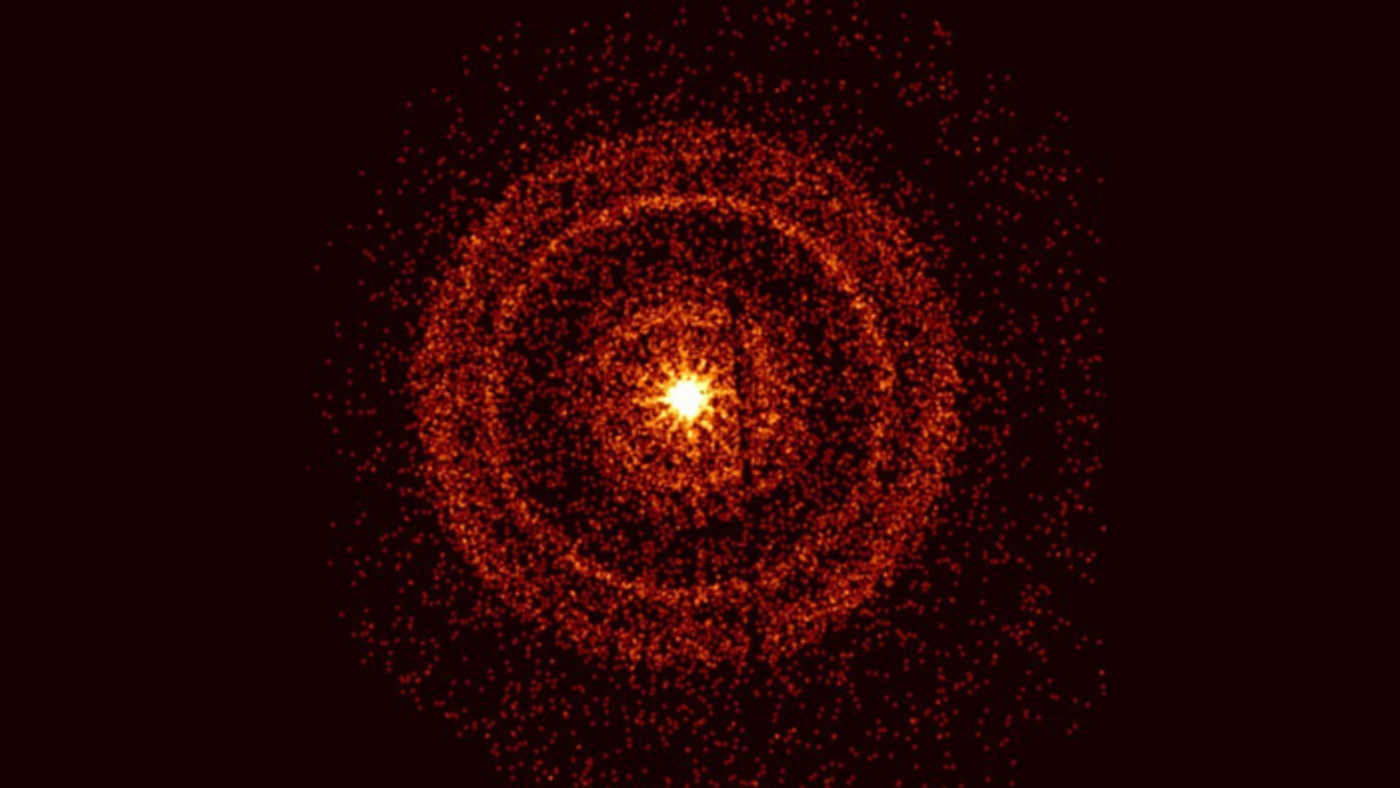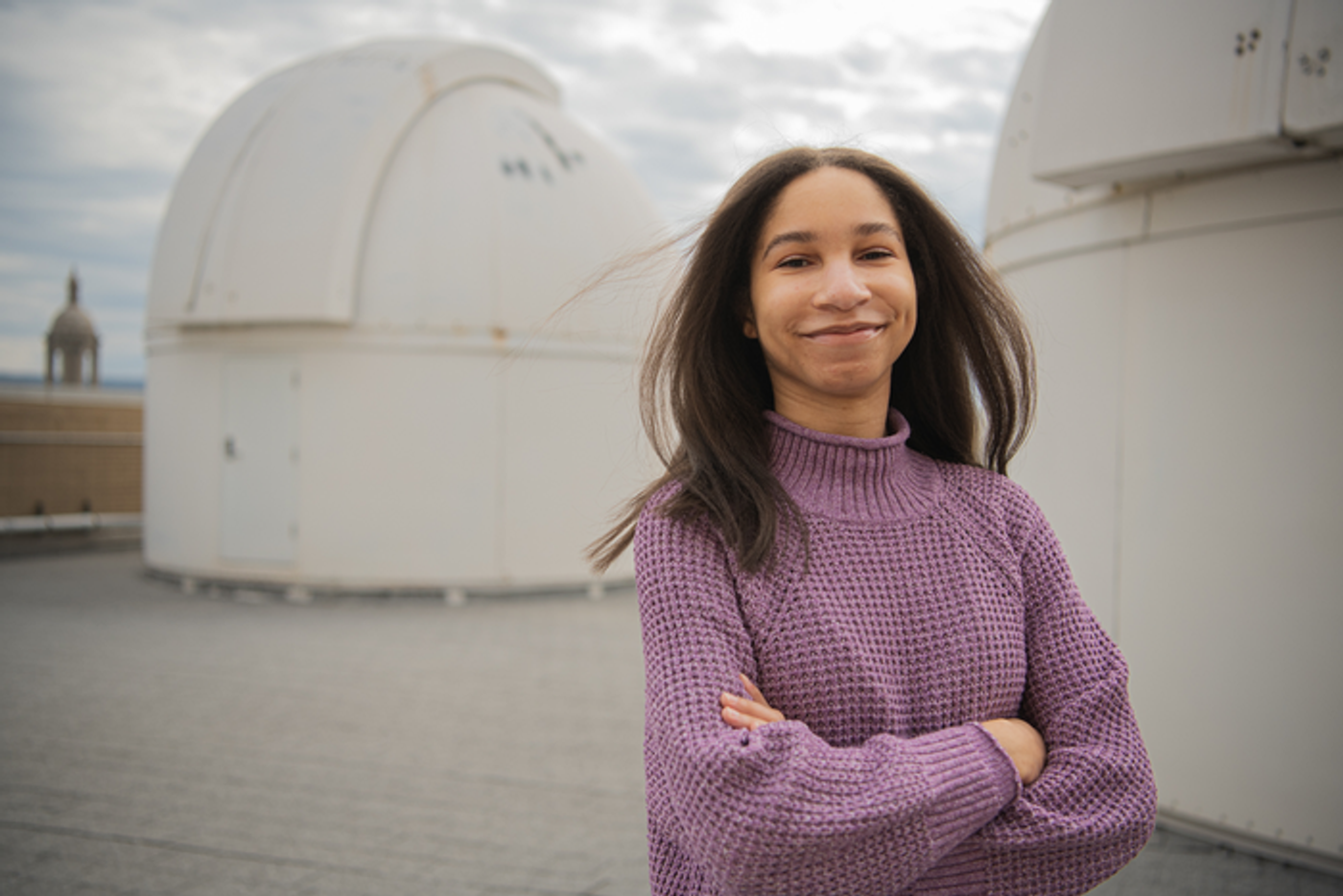A Cosmic Explosion for the Record Books
How big is the biggest gamma-ray burst? An international team of researchers led by Pennsylvania State University (Penn State) just found out as they used the Swift Observatory to discover an “unusually bright long-duration gamma-ray burst…unlikely to be repeated in our lifetime”, per the study. This discovery has already been touted as the brightest gamma-ray burst on record, GRB 221009A, and could help scientists better understand gamma-ray bursts, which occur after a star dies and are known as the universe’s most powerful explosions.
Image from the Swift X-Ray Telescope of the afterglow of GRB 221009A, the brightest gamma-ray burst every recorded. (Credit: NASA/Swift/A. Beardmore (University of Leicester))
“This one was weird, because at first it didn’t seem like a gamma-ray burst,” said Maia Williams, who is a research technologist at Penn State, and lead author of the study. “It was uncommonly bright, and its location seemed unusual for a gamma-ray burst. This was a little disappointing for me because it would have been my first gamma-ray burst that I had been assigned to follow up on. But we soon learned that it had also been detected by NASA’s Fermi Gamma-ray Space Telescope, and it was one of the brightest bursts they had seen. And then we heard from other observatories as well, so we knew this was a unique and incredibly bright gamma-ray burst.”
Maia Williams, research technologist at Penn State, and lead author of the study. (Credit: Michelle Bixby/Penn State)
The source of the gamma-ray burst is approximately 1.9 billion light-years from Earth, which makes it one of the closest gamma-ray bursts ever detected. For context, Swift detects approximately 100 gamma-ray bursts annually, but at almost 10 times the distance.
“Based on our simulations, a gamma-ray burst as energetic and as close as this one is likely to occur less than once every 1,000 years, so this really is a remarkable event that we’re unlikely to see again in our lifetimes,” said Williams. “When we first detected this burst, I had only been at Swift for a few months, so I didn’t realize how extraordinary this was.”
The discovery was made after conducting follow-up observations after the initial burst was detected on October 9, 2022, to which Williams dedicated almost 90 minutes of observations every day until the end of November 2022. However, the extreme brightness of the gamma-ray burst allowed the researchers to observe the gamma-ray burst every other day throughout December 2022. It was later determined that several other observatories around the world also detected the bright gamma-ray burst, as well.
The team has since dubbed the discovery as “BOAT”, meaning “brightest of all time”, and continue to observe the afterglow of the gamma-ray burst, which they hope could help them better understand how stars die.
“We hope that continuing to observe this gamma-ray burst will help us explain why it was so bright,” said Williams. “This experience and the support I received from the Swift team has definitely prepared me to serve as burst advocate for future gamma-ray bursts that we might detect. I’m excited to see what future discoveries we make with Swift at the Missions Operation Center at Penn State.”
What new discoveries will scientists make about gamma-ray bursts in the coming years and decades? Only time will tell, and this is why we science!
Sources: The Astrophysical Journal Letters, Penn State
As always, keep doing science & keep looking up!










